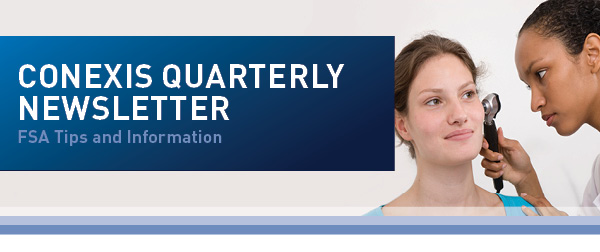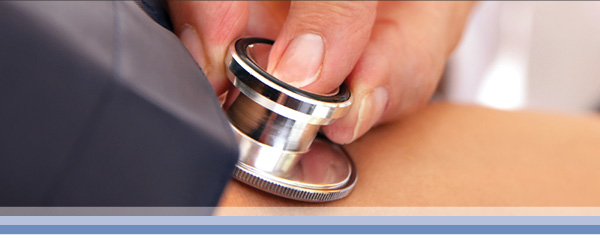
Q1 2013
Date of Publication: February 5, 2013
NEW YEAR, NEW SAVINGS |
Want to save money in the new year? With your health FSA, you can.
Whether your new plan year has begun or not, you’ll maximize your savings by knowing how to spend your pre-tax FSA dollars. It’s best to know what FSA funds pay for and what they don’t.
Eligible Expenses
You can use your FSA dollars toward eligible medical, dental, and vision expenses not covered by insurance or reimbursed by any other benefit plan or program. These are eligible expenses incurred by you, your spouse, and your eligible dependents. Examples include co-pays, co-insurance, deductibles, qualifying vision and dental services, insulin, and prescriptions. Over-the-counter (OTC) health care items, such as bandages and first aid kits are also eligible health FSA expenses. Learn more …
Ineligible Expenses
Your health FSA doesn’t cover insurance premiums, or items or services used for personal, cosmetic, or general health purposes. These ineligible items typically include cosmetic surgery and procedures, and things like makeup, soap, toothpaste, and perfume. Learn more ...
Potentially Eligible Expenses
Some health care items or services that are used to maintain general health – as well as treat a diagnosed health condition – may be eligible expenses. Examples include vitamins, herbal supplements, massage therapy, and weight-loss programs (excluding the cost of food). These "dual-purpose" expenses require a Medical Determination Form completed by your doctor. Find this form in your online account, and once completed, simply include it with your reimbursement request.
OTC medicines also fall into this category. To be an eligible expense, the OTC medicine must be prescribed by a doctor (or another person who can legally issue a prescription). You can give the written or electronic prescription to a pharmacist who will dispense it like a traditional prescription. Or you can pay for the OTC medicine out of your pocket and submit the itemized receipt and a copy of the prescription along with your reimbursement request. Get more details …
Visit our website for more on making the most of your FSA funds throughout the plan year.
MORE MILEAGE FROM YOUR HEALTH FSA |
Effective January 1, 2013, you’ll receive a penny more a mile if your employer’s FSA plan includes reimbursement for travel to and from your doctor’s office, the dentist, pharmacies, and other places where you obtain eligible health care services. The IRS standard mileage rate for medical expense is now 24 cents per mile. For more info, see our FSA Expenses webpage.
FSA Tip |
With health FSAs, timing is everything. Your annual health FSA contribution is available on the first day of the FSA plan year, but your total health FSA contribution amount is deducted from your paycheck in equal amounts throughout the year.
Let’s say that your health FSA election is $1,200 and your plan year begins on April 1. On that day, you can use the total $1,200 toward eligible health FSA expenses. Then $100 is deducted from your paycheck each month throughout the plan year. Plus, you can use your health FSA funds anytime during the plan year – as long as funds remain in your account.

KNOWING YOUR NUMBERS |
Since February is Heart Month, it’s a great time to check out your heart health. One way to do this is by getting a checkup so you can know your numbers, including blood pressure and cholesterol levels.
Check It
- Cholesterol: If you’re age 20 or older, the American Heart Association recommends you have a cholesterol check once every five years. More frequently if you have risk factors. You want your total cholesterol less than 200 mg/dL.
- Blood Pressure: At least every one to two years have a blood pressure check. More frequently if you have risk factors. The American Heart Association recommends blood pressure less than 120/80, but be sure to ask your doctor what your target level should be.
Change It
The good news, if these checks detect undesirable levels, it is possible to change them. Together, you and your doctor can make a plan for improving these numbers – and your health.
Schedule an FSA Checkup
While knowing your numbers is a good health practice, it’s also beneficial to check up on your FSA balance throughout the year. You can use FSA funds to cover health, dental, and vision checkups, prescriptions, and over-the-counter health care items like blood pressure monitors. And if needed to treat a diagnosed health condition, your FSA funds may cover services prescribed by a doctor, such as a smoking cessation program. Check out the details at www.conexis.com/myfsa.
Source: American Heart Association

877.CONEXIS | WWW.CONEXIS.COM
This email was sent by:
CONEXIS
6191 North State Highway 161, Suite 400
Irving, TX 75038
This email was sent from an unmonitored email address. While we cannot receive replies at this email address, we're happy to help you with any questions or concerns you may have. Please log in to your account at mybenefits.conexis.com and visit the "Contact Us" page for more information.
CONEXIS does not offer medical, legal, accounting, or other professional advice. If you need additional guidance, please contact your doctor, attorney, or tax advisor.
CONEXIS uses reasonable efforts to ensure that the information provided in this document is accurate as of the date of publication.
©2013 CONEXIS Benefits Administrators, LP. All Rights Reserved. CONEXIS is a Word & Brown Company. No part of this publication may be reprinted without the written permission of CONEXIS.
View our Email Privacy Policy | Unsubscribe